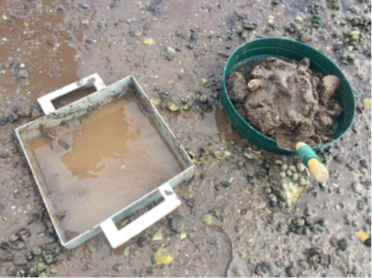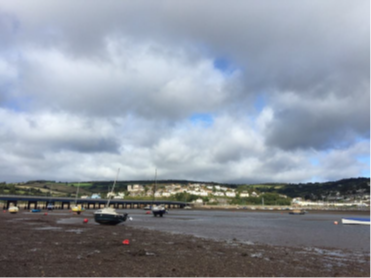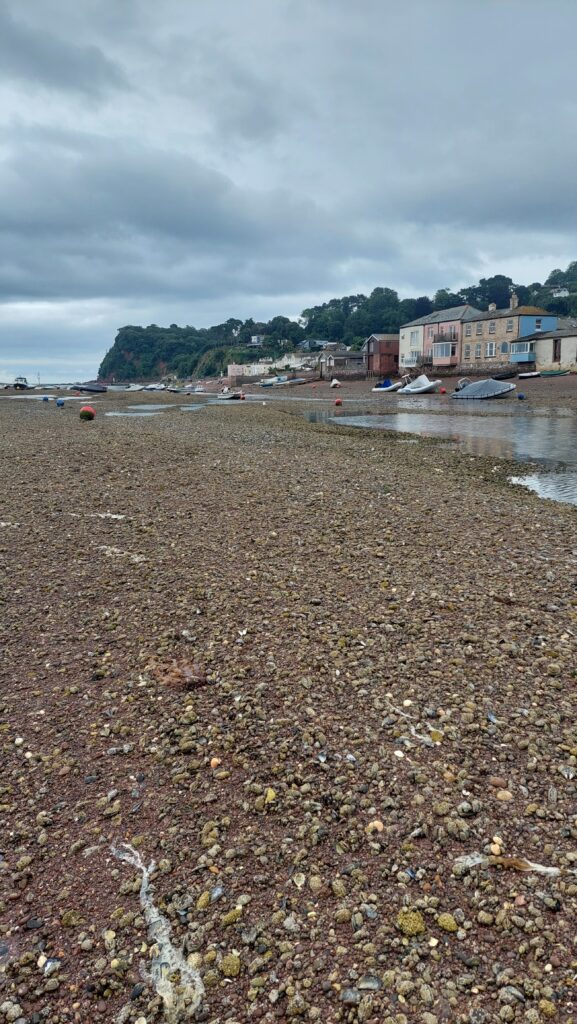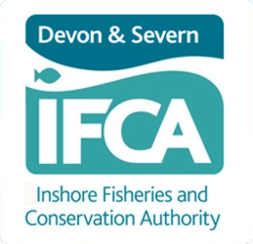D&S IFCA publishes its 2024 Teign Estuary cockle and mussel stock reports, detailing the findings of the biennial surveys, last conducted in 2024.
Cockle Surveys
On 20th September 2024 D&S IFCA officers undertook a stock assessment of the cockle beds on the Teign Estuary. Surveys have been conducted annually between 2018-2020 and every two years since. The surveys aim to estimate the density and biomass of cockles on the beds. The results from these surveys will help inform any future management of the cockle bed.
What are the results from the survey?
- The 2024 Teign Estuary Cockle Stock Assessment Report can be found here
The density of adult and juvenile cockles has varied across the six-year survey period, with density for both appearing higher in 2022 compared to 2020 and 2024. Statistical analysis suggests that the increase in adult cockle density between 2020-2022 is significant but the decrease between 2022 and 2024 is not significant. In contrast the increase in juvenile cockle density between 2020 and 2022 is not significant but the decrease in density between 2022 and 2024 is significant, with juvenile cockles reducing in density to levels similar to the six-year average. This may relate to particular patterns of recruitment across the survey period. There is high variation in density between survey stations which was taken into consideration when interpreting the data.


The average length of cockles across all survey stations has remained stable across the six-year period, but the distribution of sizes around the average varies without trend across years and between sample locations. Total biomass of cockles on the bed has also varied year on year. However, when interpreting the results it is important to consider the high variability between stations and across years, as these factors may hinder the accurate detection of subtle changes in the cockle population.
D&S IFCA received several anecdotal reports of hand gathering of cockles in the estuary, some of which report large quantities being removed. Larger cockles are likely to be targeted by hand gatherers, and therefore an increase in gathering could potentially impact the density of adult cockles in the estuary. The data supplied on the spatial distribution of hand gathering were used in two statistical approaches (Generalised Linear (Mixed) Models) to test for effects of year and harvesting status on cockle densities.
This analysis indicated that there is no evidence for a reduction in adult cockle densities between years or survey stations due to harvesting. However, it should be noted that the information supplied for this analysis has not been independently verified and may be subject to a range of potential unquantified observer biases including for example biased timing of observations in relation to tidal cycles or time of day. This should therefore be taken into consideration when interpreting the results.
Conclusions
Cockle populations are naturally subject to high levels of variation, which is considered a normal feature of their populations. Therefore, long-term monitoring is required to detect potential trends in the population dynamics of any given cockle population. Differences in hydrology across the study area could explain at least some of the variation in cockle density across the study site in the Teign, as cockles prefer moderately strong (1–3 knots) tidal flow, and different areas of the estuary experience different tidal flows and air exposure during the tidal cycle.
D&S IFCA has received a number of reports of hand-gathering of cockles from the Teign, in areas that overlap with D&S IFCA’s survey stations. Recent reports have allowed for initial statistical analysis of cockle densities in harvested versus non-harvested areas. Results from the statistical analyses indicate that at the current level of effort, cockle gathering does not appear to be having an impact on the density of adult cockles. However, it should be noted that the anecdotal information on hand-gathering has not been independently verified by D&S IFCA.
Although there is currently no commercial fishery for cockles on the Teign Estuary, D&S IFCA will aim to continue the autumn survey every two years to monitor the cockle stocks and to inform potential future management of hand working activities if resources allow.
Mussel Surveys
On 24th July 2024 D&S IFCA officers undertook a survey of the mussel beds found in the Teign Estuary. Surveys have been conducted in 2012, annually between 2018-2020 and then every two years since. Data from the surveys are used to build up a long-term picture of the stock status of the bed, which is used to inform management of the resource.
D&S IFCA introduced a temporary closure (relating to mussel only) from 1st May 2019 on the public shellfish beds in the Teign Estuary due to stock of mussel in these areas being severely depleted. The chart defining the temporary closure can be found here.
What are the results from the survey?
- The 2024 Teign Estuary Mussel Stock Assessment Report can be found here
Overview

Mussel populations within the Teign crashed between the 2012 and 2018 stock assessments, possibly due to the large storms in 2014 which may have scoured away once-previously stable beds, and due to intentional removal of raised areas of mussel around boat moorings on the Salty. Since these events, mussel populations have been unable to recover to anywhere near the previous population estimates and both The Salty and Polly Steps are no longer areas on which large expanses of dense live mussel are found. Live mussel is present on the Salty but the bed has declined significantly since 2012 and the presence of live mussel has been effectively negligible at Polly Steps since 2020.
The apparent increase in overall tonnage in the most recent survey on the Salty and Salty East is certainly a positive development, although the apparent absence of any spat raises concerns over rate and scale of any recovery, and the size of the bed is still a small fraction of pre-2012 levels. On-going monitoring will provide the necessary data to assess this. Future analysis will also consider combining Salty East with the Salty, depending on contiguity of these areas over the coming years.
Patterns observed in the sizes of mussel observed in 2024 and 2022 suggest that the transects in 2022 may have missed a considerable amount of mussel and that the results of at least one (if not both) of the 2022 and 2024 surveys of Salty East were independently unrepresentative of the true state of this area of mussel. The transect method used by D&S IFCA is designed for mussel surveys and is different to the grid-based survey method used to survey cockles. Officers are investigating how to further optimise the transect survey method to increase confidence in the results across all surveyed sites.
The data suggest that the 2019 temporary closure of the Teign Estuary’s public shellfish beds should remain in place for the foreseeable future until such time where there are established mussel beds considered both dense and large enough for sustainable exploitation.
More Information
For more information about cockles and D&S IFCA’s cockle stock assessments please visit our Cockles website page.
For more information about mussel and D&S IFCA’s mussel stock assessments please visit our Mussels website page.
If you are interested in a wider range D&S IFCA’s environment and research work, please visit the Environment & Research webpages
D&S IFCA has a risk based and intelligence led approach to its enforcement work, and actively encourages the reporting of suspected illegal fishing. Please note that the temporary closure on the public beds in the Teign (and Exe Estuary) is only for mussel and not for other species, such as cockle. D&S IFCA’s webpage on Reporting Illegal Fishing provides stakeholders with options of how they can report to us. These options include the Incident Line: 07740 175479, and an anonymous online reporting form.
